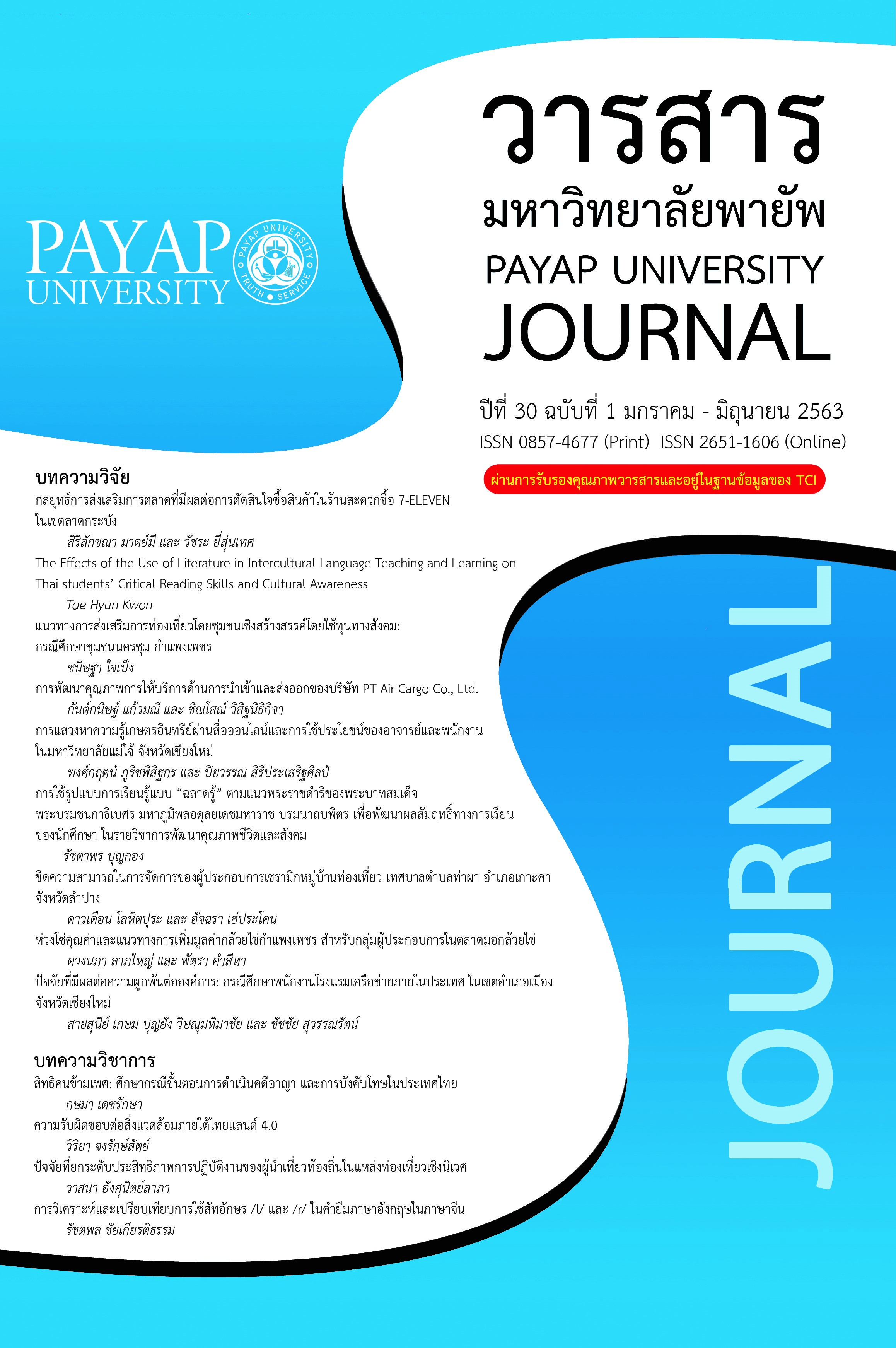Guidelines for the Creative Community-based Tourism Promotion by Social Capital: A Case Study of Nakornchum Community, Kamphaeng Phet
Main Article Content
Abstract
The research titled “Guidelines for the Creative Community-based Tourism Promotion by Social Capital: A Case Study of Nakornchum Community, Kamphaeng Phet, is based on the policy in accordance with the national development strategies which aim to develop a fundamental economy which sustainability of the environment, society and culture as well as Thai identity. Through qualitative research methodology, this research aimed to study social capital of Nakhon Chum community, Kampheang Phet, and to set the guideline for promoting the creative community-based tourism by using Nakornchum Community’s social capital. Data collection instruments were questionnaire and field notes. The purposive sampling method was employed, and 60 stakeholders were recruited as participants. The findings revealed that Nakornchum community is a community that has interesting intellectual and cultural social capital and an effective community-based tourism management system. The suggestions of this research are that the community needs to emphasize on the community participation in all steps and that the creative community-based tourism should be promoted through various media channels.
Article Details
References
เทศบาลเมืองกำแพงเพชร. (2558). ประกาศเทศบาลเมืองกำแพงเพชร เรื่อง การรายงานผลการดำเนินงานในรอบปีงบประมาณ 2558. กำแพงเพชร: ผู้แต่ง.
พิมพ์ลภัส พงศกรรังศิลป์. (2557). การจัดการการท่องเที่ยวชุมชนอย่างยั่งยืน: กรณีศึกษาบ้านโคกไคร จังหวัดพังงา. Veridian EJournal วารสารวิชาการ ฉบับมนุษยศาสตร์ สังคมศาสตร์ และศิลปะ, 7(3), 650-665. สืบค้นเมื่อ 1 มีนาคม 2562. https://he02.tci-thaijo.org/index.php /Veridian-E-Journal/article/view/27460.
ฟองจันทร์ หลวงจันทร์ดวง. (2561). การพัฒนาตัวชี้วัดการท่องเที่ยวชุมชนเชิงสร้างสรรค์อย่างยั่งยืน.วารสารอิเล็กทรอนิกส์การเรียนรู้ทางไกลเชิงนวัตกรรม (e-JODIL), 8(1), 1-23. สืบค้นเมื่อ
10 มีนาคม 2562. https://e-jodil.stou.ac.th/Page/ShowPaPer.aspx?idindex=576.
ภูริวัจน์ เดชอุ่ม. (2556). การพัฒนาการท่องเที่ยวเชิงสร้างสรรค์: กรอบแนวคิดสู่แนวทางปฏิบัติสำหรับประเทศไทย. วารสารมหาวิทยาลัยศิลปากรฉบับภาษาไทย, 33(2), 331-366.
ภัยมณี แก้วสง่า. (2555). การท่องเที่ยวเชิงสร้างสรรค์ : ทางเลือกใหม่ของการท่องเที่ยวไทย. วารสารเทคโนโลยีสุรนารี, 6(1), 91-109.
สุดแดน วิสุทธิลักษณ์ และคณะ. (2556). หนังสือคู่มือการท่องเที่ยวเชิงสร้างสรรค์. กรุงเทพฯ: องค์การบริหารการพัฒนาพื้นที่พิเศษเพื่อการท่องเที่ยวอย่างยั่งยืน.
สำนักพัฒนาสังคมและคุณภาพชีวิต. (2546). ทุนทางสังคม (Social Capital), สืบค้นเมื่อ 15 มีนาคม 2562. http://pattanathai.nesdb.go.th/Knowledge_pdf/social_capital.pdf
วีระพล ทองมา, วินิตรา ลีละพัฒนา, และ นวนจันทร์ ทองมา. (2554). การพัฒนาการท่องเที่ยวเชิงวัฒนธรรมอย่างยั่งยืนของชุมชนชาวจีนในพื้นที่ลุ่มน้ำแม่งอน อำเภอฝาง จังหวัดเชียงใหม่ (รายงานผลการวิจัย). เชียงใหม่: มหาวิทยาลัยแม่โจ้.
องค์การบริหารการพัฒนาพื้นที่พิเศษเพื่อการท่องเที่ยวอย่างยั่งยืน (องค์การมหาชน). (2561). 9+1 Building Blocks เครื่องมือการพัฒนาการท่องเที่ยวโดยชุมชนอย่างมีส่วนร่วม. กรุงเทพฯ: ผู้แต่ง.

